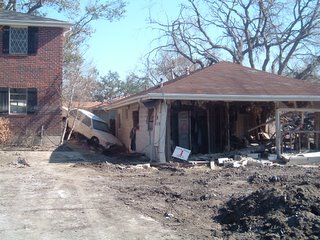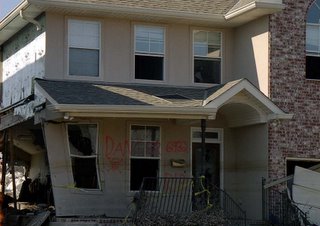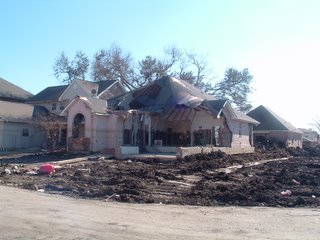I think many of us went to New Orleans with thoughts of working face-to-face with clients affected by the storm. We imagined ourselves (at least I did) helping displaced citizens fill out FEMA claim forms or file complaints against their landlords for wrongful eviction. We wanted to "make a difference."
When we got there, the New Orleans Pro Bono Project was in its own process of rebuilding. What it needed from us was help putting itself back together again so that it could serve the needs of the city's poorest residents as they began to return home. The role of the New Orleans Pro Bono Project is to match volunteer attorneys with poor clients who need assistance with a wide variety of legal matters. After Katrina, the project staff had little idea where their attorneys and clients were and whether clients were still being served. The succession cases were the most pressing, because unless clients had proven title to their homes, they couldn't get a check from FEMA. Many longtime New Orleans residents have lived in the same homes their families have occupied for decades-- "title" was something that was just understood. It never needed to be proven. Until Katrina. So we spent our days with the Pro Bono Project trying to track down all the displaced attorneys and clients, trying to determine if cases had been closed, and whether clients still needed services. It was an arduous and tedious process of calling attorneys and clients, getting disconnected numbers or new contact information, looking up displaced attorneys on the Louisiana State Bar website, waiting for return phone calls, and logging all the new information onto forms and in databases.
I didn't get to fill out any FEMA forms or file any complaints on behalf of wrongfully evicted persons. But what I did do was help rebuild one of the major infrastructures used to provide legal services to the poor in New Orleans. What I did do was help take some pressure off of the Pro Bono Project staff, who are withered and weary from their own dislocation yet determined to do everything they can to continue to assist their clients. What I did do was learn what rebuilding really means-- that everyone checks their ego at the door, rolls up their sleeves, and digs in to do whatever needs doing as best they can.
My deepest thanks go out to the staff of the Pro Bono Project for feeding us both physically and spiritually, to Judges Tainey and Landrieu for showing us the critical role of attorneys in service to those living in poverty, particularly in moments of historical crises, to the Hoffmans for their warm hospitality and wonderful food, and to the Goodsons for opening their own flooded homes to a bunch of rowdy law students who crowded their floors, sofas, and lives for five days. My gratitude is beyond words.



 It's difficult to see, but the orange spraypaint on the front of this house (which sits directly in front of the breached levee) says "Danger" with a skull and crossbones symbol, and "RIP." In the upper windows, we could see a lamp and some bookcases, signs of a normal home before this disaster struck.
It's difficult to see, but the orange spraypaint on the front of this house (which sits directly in front of the breached levee) says "Danger" with a skull and crossbones symbol, and "RIP." In the upper windows, we could see a lamp and some bookcases, signs of a normal home before this disaster struck.
